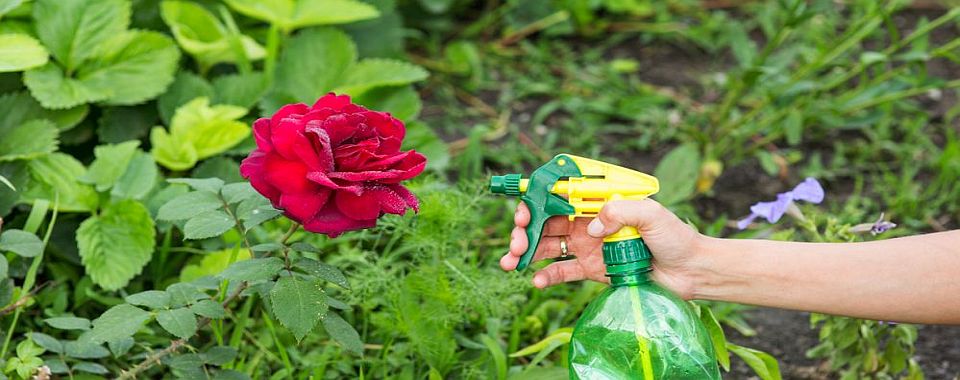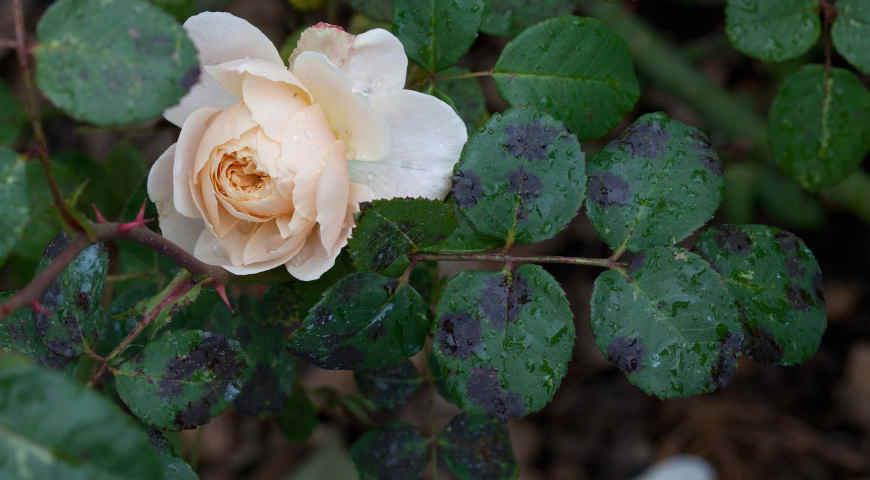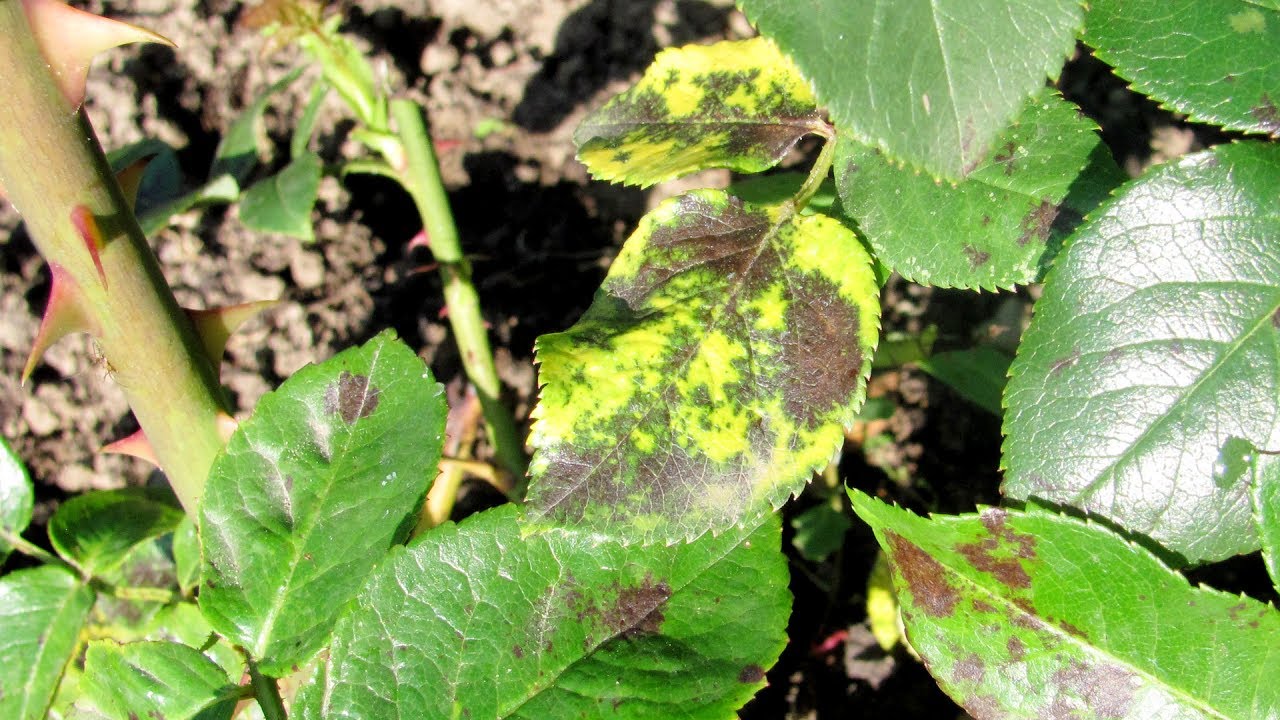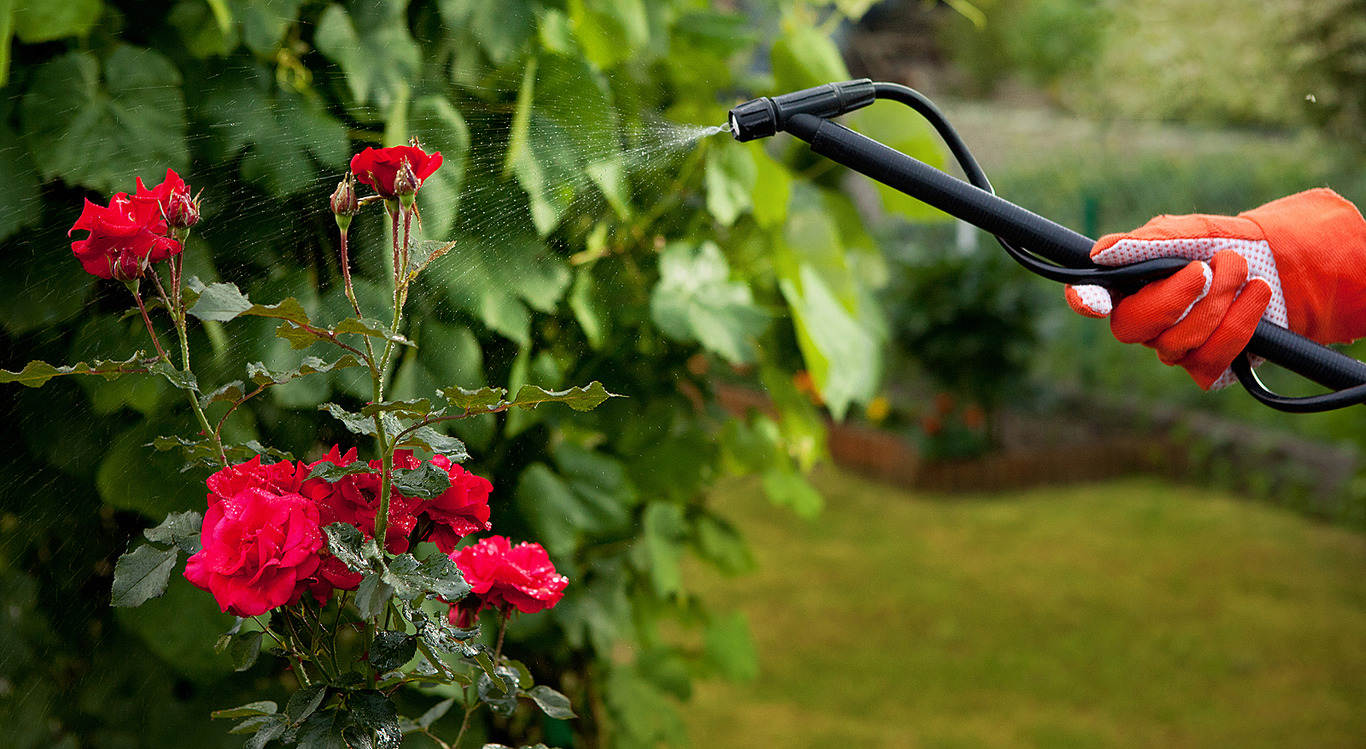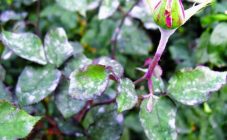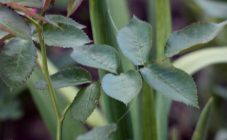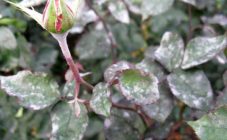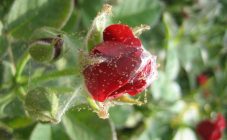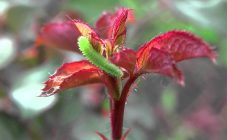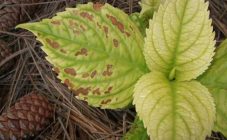Content:
Black spot affects rose leaves. It is one of the most common diseases and occurs wherever roses grow. The disease is provoked by the fungus Marssonina rosae. The spores of the pathogen persist during the winter and become active when a steady warming occurs. From this moment, the spores begin to climb the stems and spread throughout the tissues of the rose. The first symptoms of mottling appear in June-July (on weak crops), and in August-September the disease covers more resistant varieties. In summer and autumn, there are periodic exacerbations of pathology.
General rules for caring for roses
The basic rules for caring for indoor and garden roses are reduced to regular watering, transplanting and pruning bushes before wintering.
It is recommended to prune the roses in autumn, leaving about 30 cm of the stem. This treatment provides plants with a rest, thanks to which spring blooms begin earlier.
Pruning is best done after the night temperature has dropped to 0 degrees. If you do this earlier, the rose will continue to bloom. As a result, young shoots will freeze and die, and the plant will waste energy before wintering.
Watering at this time should be reduced, since being in "hibernation", the rose does not need as much moisture as during active development and flowering.
Every year the rose bushes become more dense, their roots grow, turn into a powerful, strong root system. Therefore, it is recommended to move the roses to a new place annually, and if we are talking about indoor plants, then to larger containers. Over time (after 5-7 years of life), the culture grows so much that in any case it has to be transplanted into open ground - into the courtyard under the windows of a house or in a summer cottage, in a garden.
Thanks to annual pruning over 7-8 years, 2-3 new shrubs will appear from each crop.
The transplant is carried out in the fall or spring. For a room rose, you need to pick up a pot with a larger diameter than it was before. This will allow the roots and shoots to grow and develop intensively. At the same time, too large a container will negatively affect the state of the flower: the soil at its walls will acidify, which will lead to decay of the roots and the death of the plant.
The best time to transplant is autumn, 30 days before winter pruning. Garden roses prefer open, well-lit areas.
It is worth noting that the rose loves to be sprayed with cool water, especially if the weather is hot and dry. As a result, the bushes will form buds much faster. After each spraying, the room should be ventilated to prevent moisture stagnation and the appearance of powdery mildew and cobwebs. If a white bloom has appeared on the leaves, it is necessary to remove the infected leaves and remove the cobweb with a damp cloth.
Wet soil after watering in the evening dries out and becomes covered with a hard crust, which must be loosened so that the roots of the flower can breathe freely.
Symptoms of black spot
The disease is provoked by a fungus and has a detrimental effect on the condition of the leaves and other tissues of the rose bush.The infection is transmitted through water droplets (this can be rain or dew).
The disease is characterized by the fact that black spots appear on the leaves of a rounded rose, which darken over time. The diameter of the formations ranges from 5 to 16 mm. Soon a brown or brown spot along the edges begins to turn yellow, many small indistinct spots appear on them. After 5-10 days, the specks merge with each other, and the leaves become completely yellow-brown in color, curl and die.
Due to the fact that diseased leaves fall off ahead of time, the plant forms fresh shoots. The vegetation process does not have time to complete, and in winter they freeze. As a result, culture growth slows down.
Black spot on roses - how to treat
Getting rid of the problem is much easier in the early stages of the development of the disease. But even in this case, it will be quite difficult to eliminate the pathology.
How to treat black spots on rose leaves? Treatment of pathology is as follows:
- Removal of diseased leaves (harvest and burn).
- The plant should be treated with fungicides (2-4 times every 1-2 weeks).
- The soil around the bush is poured with Fitosporin-M.
- Before sheltering for the winter, the site is cleaned of fallen leaves, which are then burned.
- Before wintering, the rose is treated with iron sulfate (3% solution).
- In the spring, they resort to preventive measures.
Fungicides are chemicals that effectively inhibit the growth of fungi. They all fall into several categories:
- Copper (Bordeaux mixture). They must be used with caution, in moderation, since the drugs are very toxic. Otherwise, the soil will suffer from an overabundance of copper.
- Systemic fungicides (Previkur Energy, Difenoconazole, Topaz, Fundazol).
- Systemic contact fungicides (Profit Gold, Ordan).
The use of these products must comply fully with the manufacturer's instructions. The effectiveness of black spot control depends on the correct choice and application of fungicides. Experts recommend alternating systemic and contact drugs. Systemic fungicides are also advised to alternate with different active elements so that the pathogen does not have time to adapt to them. At first, drugs with the lowest toxicity should be used.
As for the causes of the disease, there may be several:
- if the planting site is too low or there is dense vegetation nearby, moisture will evaporate for a very long time, which will create favorable conditions for the development and spread of the fungus;
- warm and damp weather for many days;
- excess or lack of fertilizers;
- in general, poor quality plant care.
The reproduction of the fungus is facilitated by a strong thickening of the culture, weak air circulation, as well as the lack of a rose of this or that variety of immunity to the disease.
Prevention
Healthy plants that are grown in accordance with agricultural technology and for which quality, comprehensive care is provided. Such cultures are highly immune to fungal infection. The determining factors for successful prevention of black spot are:
- the presence of consistency;
- complexity of the approach;
- timeliness;
- processing the entire site, not just the problem area.
Bushes must be planted in brightly sunlit places at a sufficient distance from each other. The thickening of the rose garden prevents the normal evaporation of moisture, which contributes to the free movement of the spores of the fungus from one plant to another.
Among other rules for caring for roses that prevent the development of a fungus, it is worth highlighting the following:
- liquid mixtures are applied at the root;
- watering is carried out in the morning or afternoon;
- mixtures and solutions saturated with beneficial bacteria are periodically added to the soil under the bush;
- regularly mulch the soil;
- compost or manure is added to the soil;
- also the plant should be sprayed with biofungicide;
- carry out spring treatment for spotting (until the buds appear, the flower and the ground under it are sprayed with a 3% solution of Bordeaux liquid or ferrous sulfate - it is recommended to alternate the funds every year; when the first leaves bloom, roses must be treated with chemical (containing copper), biological (Fitosporin- M) or folk (mullein, iodine) means every 1-2 weeks);
- in the summer, the site is cleared of weeds and fallen leaves, the culture is examined and top dressing is applied (to increase immunity and stimulate growth); spraying with these preparations also strengthens the foliage and promotes its active growth;
- in September, the culture is fertilized with potassium-phosphorus mixtures;
- before shelter for the winter, they trim all the leaves, burn the fallen leaves; then the rose is treated with copper or iron vitriol.
Specialist recommendations
Black spot on the leaves of a rose poses a serious threat to rose hips growing nearby, so they should be transplanted at the farthest distance from the rose bushes. There should be no varieties on the site that have a weak resistance to fungal infections.
One way or another, the main preventive measures to prevent the development of black spot are:
- Spring spraying.
- Removing foliage from shrubs before wintering.
It is worth noting that not a single rose variety is 100% resistant to this disease. Therefore, absolutely all varieties of culture can get sick. Depending on the degree of resistance to pathology, roses are divided into two categories:
- susceptible (in particular climbing, tea varieties);
- weakly receptive.
Most of the modern hybrid varieties are highly immune to black spot.
Well-chosen neighbors for roses will help to a certain extent protect the crop from diseases and parasites. The fact is that the latter often secrete substances on which the fungus is actively developing.
These plants include:
- lavender;
- oak sage;
- lemon catnip.
Rose black spot is caused by the fungal infection Marssonina rosae. The danger of pathology lies in the very rapid spread of spores, from which it is very difficult to protect healthy plants. It is possible to protect the delicate culture from the appearance of black spot as much as possible with the help of competent and comprehensive flower care. In the event that the infection with the fungus has already occurred, it will be difficult to cure the plant: it will take a long time to fix the problem, using various means, alternating them and combining them in accordance with the recommendations specified in this article.
